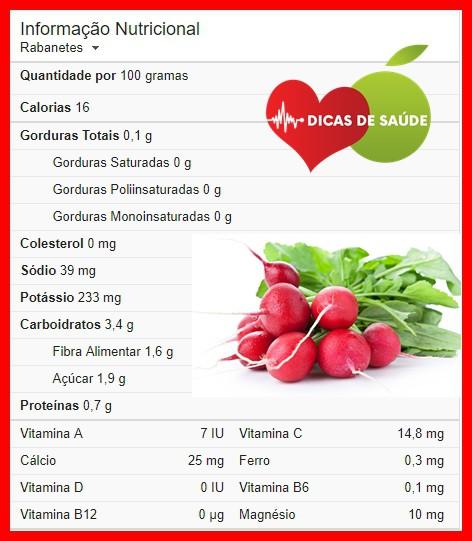
Radishes or radishes they are little-known vegetables in the kitchen of the countryside, in which they are mainly used raw.
However, eat radishes it would bring some health benefits, for example, by improving digestive processes.
Also, the calories of radishes are quite low, therefore, they can also be consumed in the case of a slimming diet.
Let's find out better.
<br>• What are radishes
<br>• Variety of radishes
<br>• Properties and benefits of radishes
<br>• Calories and nutritional values of radishes
<br>• How radishes are eaten
<br>• How to cook radishes
<br>• Contraindications and side effects of radishes
<br>• Cultivation of radishes
What are radishes
The radishes (Raphanus sativus) are gods vegetables that belong to the cruciferous family and not very common in the kitchen and country, where they are consumed only raw.
Some radish the root is mainly consumed, which in other regions is also served cooked.
Variety of radishes
According to shape and color, different varieties of radish are distinguished, such as radish, radicula or niger, however, the organoleptic and nutritional characteristics remain quite similar.
Properties and benefits of radishes
There are currently not many studies on the properties of radishes, however, some of them found some health benefits, including:
- They lower the risk of cancer.
- They improve digestion.
- They have antifungal activity.
You can also learn more about the properties and benefits of radish sprouts
Calories and nutritional values of radishes
100 g of radishes provide
- 11 kcal
- 0,8 g protein
- Lipids 0,1 g
- G carbohydrates 1,8
- Sugars 1,8 g
- Fiber 1,3 g
How radishes are eaten
Radishes are mainly eaten raw, however, there are several recipes with radishes.
From sour and pungent flavor, are suitable for contrasting dishes with a flat or sweet taste. For example, they are widely used to enrich salads.
Furthermore, they can be steamed or baked and combine them with potatoes or vegetables.
How to cook radishes
Radishes can be eaten raw or cooked, cooking them in a pan, steamed or baked.
Contraindications and side effects of radishes
Eaten in the right quantities, radishes they have no particular contraindications.
Cultivation of radishes
Growing radishes is not a daunting task, as they adapt well to different climatic and environmental conditions.
According to the variety, they are harvested all year round, for this reason, it is easy to find them among the vegetable stalls in any season.
READ MORE
Daikon, the giant radish, and its use in macrobiotic nutrition
Bibliography and sources
In Vitro Activity of the Antifungal Plant Defensin RsAFP2 against Candida Isolates and Its In Vivo Efficacy in Prophylactic Murine Models of Candidiasis, Antimicrobial Agents and Chemotherapy
Effect of Radish Leaves Powder on the Gastrointestinal Function and Fecal Triglyceride, and Sterol Excretion in Rats Fed a Hypercholesterolemic Diet [2008], Journal of the Korean Society of Food Science and Nutrition
Hexane Extract of Raphanus sativus L. Roots Inhibits Cell Proliferation and Induces Apoptosis in Human Cancer Cells by Modulating Genes Related to Apoptotic Pathway, Plant Foods for Human Nutrition
Food composition tables, CREA


























